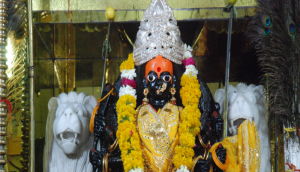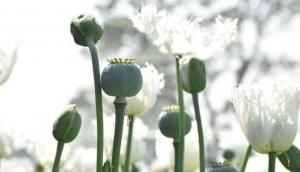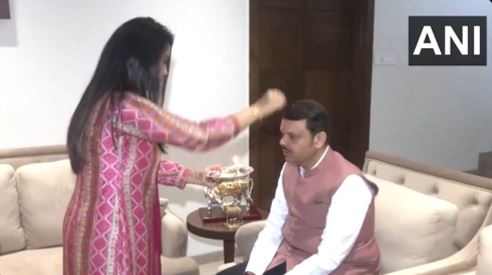Here's what makes the craze about Pakistani chaiwala Arshad Khan so disturbing

For 3 days now, he has stared at me - a Pakistani phantom with piercing blue eyes haunting my social media feed. For 3 days, I have acknowledged his presence, avoided his gaze and gone about my day, refusing to be drawn into the mass hysteria surrounding him.
It's not because I don't acknowledge his good looks. It's because the way media (both social and traditional) has gone about "appreciating" him makes me very uncomfortable. It sticks out jarringly for its objectification and the exoticisation of 'the other'.
Objectification isn't a one-way street
Instagram constantly throws up new candidates for the "Internet's hottest *insert vocation here*". In most cases, they are Instagram users who are able to assert both their identities as well as their looks. This is why, when they blow up, it is not problematic as they are able to exercise and enforce their agency. Arshad Khan's case is strikingly different.
Also read -Meet the internet's latest craze: Khoudia Diop. Tall, dark, and beautiful
For starters, the way Khan, the 'chaiwala', has been treated in the media has robbed him of any shred of agency. For proof, one needn't even look past the headlines - "'Hot' Pakistani 'chai wala' is Internet sensation"[The Hindu], "This chai wala from Islamabad is the internet's latest crush" [Dawn] and the puke-worthy "There's hot tea in town" [Hindustan Times]. These headlines rob Khan of the most basic form of agency - a name.
Even in the original Instagram post he has no name.
Within this gaze, Khan's only capital is his looks. His story, his personality, heck, the most obvious question of all - is his chai any good?, are all things that have completely been ignored in our objectification of the man.
Even pieces aimed at providing facts about the man never go beyond the surface. After all, he's just another hot piece of ass, right? It's logic that would've raised the hackles of the liberal brigade had a woman been the subject, but it doesn't in the case of Khan - because he's a man.
Objectification may be a concept that is central to the feminist movement. It is something that happens to women every day across the world. However, it is not exclusive to women. When objectification happens to a man, it is still objectification. It's not even 'reverse objectification', there's no such thing, because objectification is not gender specific.
Anyone arguing that it's okay when the person on the receiving end of objectification is male - because men haven't had to suffer the oppression women have endured - is misguided. It's like arguing that it's all right to have white slaves because they haven't traditionally been victims of slavery. Anyone who can claim it as "feminist" is wrong, because feminism is about equality, not perpetrating that which you wouldn't like done to you.
A darker, classist aspect
Ask yourself this - if someone had taken a picture of Arshad Khan and not mentioned that he was a chaiwala, would you still consider him attractive? The chances are, you would. But would you swoon, would you, creepily I must add, share his photo with your friends and tweet about it? Almost certainly not. After all, this is not our response to every attractive person we see.
The fact is that Arshad is famous not because of himself - sure he's attractive, but not exceptionally so.There are many others who are equally good looking but languish in everyday obscurity. Instead, he's famous because of the fact that a privileged, Louis Vuitton bag-toting Instagrammer Jiah Ali could possibly find him attractive. That's what makes Arshad incredible. Because, in our world where the rich are pretty and everyone else is grimy, the thought of an attractive chaiwala seems exceptional.
In India, it goes a step further, because, in addition to being poor and of a lower social class, he's also PAKISTANI! At a time when Indo-Pak tensions are at a peak, Khan's appeal is almost taboo.
Also read -NaanWala & KaamWali take over after Pakistan's blue-eyed ChaiWala bags modelling contract
This exception to our perceived rules of class and stereotype makes him exotic and desirable. Our perception of Arshad is so tinted by the lens of class that even the backlash against him smacks of classism. Twitter trends like #tharkiwala, #naanwala and #kaamwali showed that those who were upset at the attention Khan was getting, were upset because they found it absurd for someone of Khan's social class to be seen as attractive.
With all of this being the case, it's heartening that at least he's managed a modelling contract out of this whole ordeal. It should go some way to feeding the seventeen siblings Khan reportedly has, a struggle that obviously exists. A struggle that has necessitated an 18-year-old boy to be a chaiwala. A struggle which, even after hundreds of articles, we know nothing about, because this story was never about him. It was about our own socio-cultural hegemony.
First published: 19 October 2016, 9:29 IST






![BJP's Kapil Mishra recreates Shankar Mahadevan’s ‘Breathless’ song to highlight Delhi pollution [WATCH] BJP's Kapil Mishra recreates Shankar Mahadevan’s ‘Breathless’ song to highlight Delhi pollution [WATCH]](https://images.catchnews.com/upload/2022/11/03/kapil-mishra_240884_300x172.png)

![Anupam Kher shares pictures of his toned body on 67th birthday [MUST SEE] Anupam Kher shares pictures of his toned body on 67th birthday [MUST SEE]](https://images.catchnews.com/upload/2022/03/07/Anupam_kher_231145_300x172.jpg)






